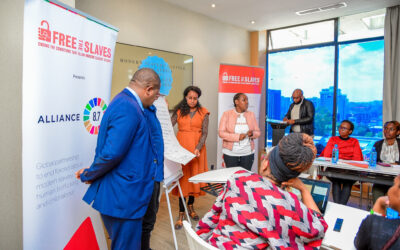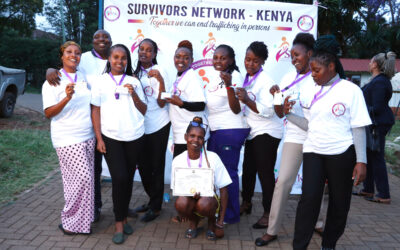Fighting slavery isn’t just the right thing to do, it’s the smart thing to do. That simple truth underpins the anti-slavery movement’s recommendations to the Trump administration, which were made public this week.
Simply put: slavery anywhere is a threat to freedom everywhere; slave labor overseas undercuts American jobs and the U.S. economy.
“Trafficking in Persons (TIP) represents a grave affront to the U.S.’ security, economy, and national values, degrading and reducing human beings to commodities that can be exploited for commercial sex acts or labor,” says the Presidential Agenda for Abolishing Modern Slavery and Human Trafficking. The 28-page report is authored by the Alliance to End Slavery and Trafficking (ATEST), a coalition of leading U.S. organizations that combat modern slavery at home and abroad, including Free the Slaves.
“The battle against TIP has been bipartisan, with champions driven by a shared moral and national security imperative,” the report notes. “Forced labor degrades work conditions in the United States and around the world, artificially suppressing wages and fueling unfair competition on the basis of human exploitation. This happens when domestic or foreign competitors of law-abiding American businesses undercut labor costs by trafficking workers in other countries.”
The report recommends 20 specific action steps the Trump administration can take:
- To Stop Human Trafficking, Use Trade Policy and Trade Enforcement to Protect American Business and Workers.
- Enforce Core Labor Standards to Prevent Human Trafficking, Protect the Livelihoods of All Workers, and Create a Level Playing Field for American Business.
- Expand Access to Victim Services and Empower Survivors.
- Increase Services For and Outreach To Vulnerable Populations.
- Address Root Causes of Trafficking and Focus on Prevention Efforts.
- Expand Employment, Training, and Entrepreneurship Opportunities for Survivors of Trafficking.
- Promote a Meaningful Role for Survivors in Policy Development
- Support Tested Efforts to Increase Victim Identification.
- Ensure Law Enforcement Efforts are Victim-Centered.
- Help Obtain Restitution for Victims.
- Ensure the USG Coordinates Human Trafficking-Related Investigations and Prosecutions.
- Separate Immigration Enforcement from Labor Enforcement.
- Prevent Fraud in Foreign Labor Contracting.
- Devote Additional Resources and Attention to Labor Trafficking Cases.
- Promote Research and Data Collection to Maximize USG Investments.
- Ensure the Integrity of the State Department’s Annual TIP Report.
- Integrate Anti-Trafficking Policies and Activities into Development Programs to Maximize the Impact of Foreign Assistance.
- Leverage U.S. Global Leadership to Fight Human Trafficking.
- Engage with Civil Society and Congress to Reauthorize the Trafficking Victims Protection Act.
- Stop Traffickers from Profiting Off Taxpayer Dollars.
“The administration of Donald J. Trump is taking office at a pivotal moment in the fight against TIP,” the report notes, saying that President Trump has a “historic opportunity to chart a course towards a new age of liberty—bringing freedom, empowerment, and justice to millions of people around the world while safeguarding the jobs, rights, and security of all Americans here at home.”



